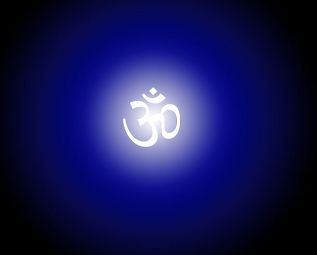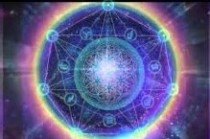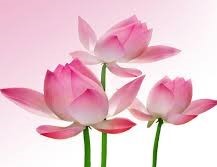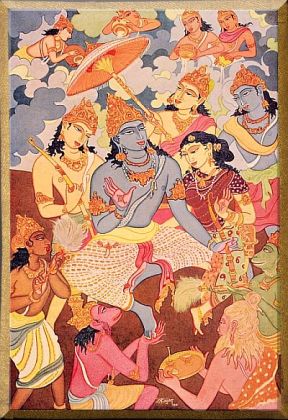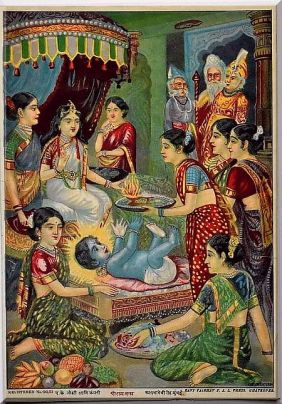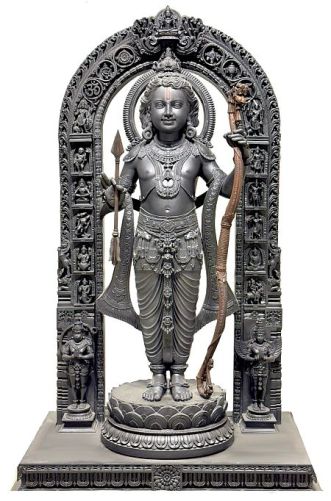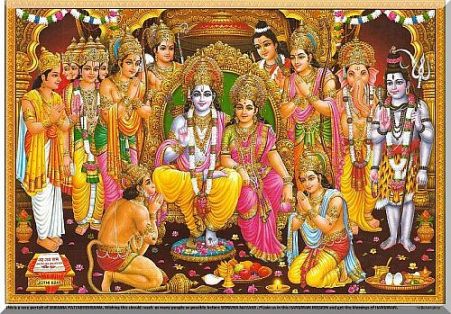Continued from Part Fifteen – Lakshana Granthas– Continued
Part Sixteen (of 22 ) – Lakshana Granthas – Continued
8. Sangita-ratnakara by Sarangadeva

Sarangadeva’s Sangita-ratnakara (first half of 13th century) is of particular importance, because it was written just before influence of the Muslim conquest began to assert itself on Indian culture. The Music discussed in Sangita-ratnakara is free from Persian influence. Sangita-ratnakara therefore marks the stage at which the ‘integrated’ Music of India was before it branched into North-South Music traditions.
[Sarangadeva’s Sangita-ratnakara was published by Adyar Library in four volumes. Please click here for : Vol I; Vol II ; Vol III and Vol IV ]
It is clear that by the time of Sarangadeva, the Music of India had moved far away from Marga or Gandharva, as also from the system based on Jatis (class of melodies) and two parent scales. By his time, many new conventions had entered into the main stream; and the concept of Ragas that had taken firm roots was wielding considerable authority. Sarangadeva brought together various strands of the past music traditions; defined almost 267 Ragas; established a sound theoretical basis for music; and, provided a model for the later musicology (Samgita Shastra).
Sarangadeva’s emphasis was on the ever changing nature of music; the expanding role of regional (Desi) influences on it; and, the increasing complexity of musical material that needed to be systemised time and again. Yet; Sarangadeva was rooted in the prevalent musical practices of his time. His stress was consistently on the Lakshya , the music as practiced than on ancient theories, which though he respects them highly.
Thus, Sangita-ratnakara not only provides materials for the study of the ancient music , but it also gives an insight into the then current practices. In his writing, Sarangadeva draws a clear distinction between the well established ancient (purva prasiddha) and the contemporary popular (adhuna prasiddha) Ragas. He also gives descriptions of the structures and temperaments of musical instruments such as Veena and Vamsa (flute ) according to the practices of his times.
Sarangadeva gives some information about himself in the beginning of the work. Sarangadeva introduces himself as belonging to a family which hailed from Kashmir. His grandfather Bhaskara, an Ayurveda physician, moved from Kashmir into the newly found Yadava capital Devagiri (Maharashtra) in the Deccan region at the invitation of King Bhillanna V (1173-1192). After the death of Bhillanna, his son Jaitrapala or Jaitugi ascended the throne and ruled for a short period. He was succeeded in 1200 by Singhana (1200-1247). He was a very powerful king and also a great patron of arts, literature, and science. It is during his reign that Sarangadeva was appointed in his father’s (Sodhala’s) post as the Royal Accountant (Sri-karana-agrani). Along with his work at the King’s offices, Sarangadeva continued to practice the family profession of Ayurveda. He is also said to have written an Vedanta work entitled Adhyatma-viveka. That work is not available now.
During his spare hours, Sarangadeva was busy composing his monumental work on Indian music the Sangita Ratnakara, the Ocean of Music. It turned out to be one of the important and comprehensive Sanskrit texts on Music of India.
The Samgita Ratnakara of Sarangadeva is a great compilation; though not an original work, neverthless , it ably brings together various strands of the past music tradition found in earlier works such as : Nāţyashastra, Dattilam, Bŗhaddēśī, Sarasvatī-hŗdayālańkāra-hāra ; and, one that is greatly influenced by the commentary of Abhinavagupta the Abhinavabharathi .
But for Samgita Ratnakara, it may have been more difficult to understand Natyasastra and Brhaddesi and other ancient texts. And, Samgita Ratnakara also established a sound theoretical basis for music related issues and practices. It also provided a model for the subsequent treatises to elaborate on music-theories and practices (Samgita Shastra).
**
The Sangita, according to Sarangadeva, is a comprehensive term. It includes vocal (Gitam) and instrumental (Vadyam) music; as also dance (Nrtyam) – Gitam, Vadyam tatha Nrtyam trayam Samgitam uccyate. The last one, Nrtyam, the dance, is composed of all the three elements.
In his work Sangita-ratnakara, Sarangadeva devotes seven chapters for discussing these three components (Anga-s) of Sangita.
The Gitam, the song format, is a fusion of Nada (sounds) and Akshara (composition made of words). Its musical element is named Dhathu; while its composition made of words is called Mathu. Lohana Pandita, in his Raga-tarangini, says: – Dhatu-matu-samayauktam Gitam iti uccyate budhaih; tatra nadatmako dhatur matur akshara sambhavah’.
Gitam, going by its traditional definition, strictly belongs to the Salaga Suda class of Prabandha, which is composed two Angas (elements) – Pada (words) and Taala (time-beats); and, having three components or Dhatus (Tri-dhatuka Prabandha): Udgraha, Dhruva and Abhoga. For more on that, please click here. But, in common practice, anything that is sung goes by the name of Gita (Giyata iti Gitam).
The term Vadyam, covers a wide variety of musical instruments, such as : the varied string instruments; different types of Drums; bell-metal cymbals ; and a host of wind instruments including flutes, pipes , conch, trumpets etc.
The Nrtya covers rhythmic limb movements as also eloquent gestures expressing emotions through Abhinaya. It is a harmonious combination of facial expressions, various glances, poses and meaningful movements of the hands, fingers and feet. Nrtyam, the dance, delightfully brings together and presents in a very highly expressive, attractive visual and auditory form, the import of the lyrics (sahitya), the nuances of its emotional content, to the accompaniment of soulful music and alluring rhythmic patterns (tala-laya).
[Please also read the highly educative introduction written by the renowned scholar SriT R Srinivasa Ayyangar to the Sangraha Chudamani of Govinda, Edited by Pandit Sri S .Subrahmanya Sastry ; published by Adyar Library, 1938.]
**
Thus, the Samgita Shastra as envisaged by Sarangadeva was a composite art consisting Gita (melodic forms), Vadya (instruments) and Nrtta (dance or limb movements). By the time of Samgita-ratnakara, three Angas (limbs) of Samgita were well developed. Of these, the Vocal music was regarded as the essential, fundamental music through which all other forms of music were to be understood and interpreted. Here again, Sarangadeva focuses on Desi Sangita, though he comments on aspects of Marga Sangita. On Dance (Nrttya) he offers clear picture of both Marga and Desi traditions, although in a concise manner.
Sangita Ratnakara is a standard and an authoritative text; and it hugely impacted almost all the writers in the subsequent period. It is also a reliable source book on ancient music traditions and their authors. Sarangadeva, gives an elaborate resume of the general system of Indian music in theory and practice as had been developed in the centuries previous to the thirteenth. He gives detailed exposition of th jatis, and the grama-ragas, accompanied by actual notations.
But, the most valuable information that this text conveys to us is as to the ancestry of several of the ragas, whose names occur for the first time in the Sangita Makaranda and which ragas must have acquired those names some time before, say about the eighth century. The text of Sarangadeva affords the only evidences as to the sources from which these well-known ragas derive their character and existence. But for Samgita Ratnakara, it may have been more difficult to understand Natyasastra, Brhaddesi and the other texts .
The text of Sangita Ratnakara has 1678 verses spread over seven chapters (Sapta-adhyayi) covering the aspects Gita, Vadya and Nritta: Svaragat-adhyaya; Ragavivek-adhyaya; Prakirnaka-adhyaya; Prabandh-adhyaya, Taala-adhyaya; Vadya-adhyaya and Nartana-adhyaya. The first six chapters deal with various facets of music and music-instruments; and the last chapter deals with Dance.
The first chapter deals with Nada (the sound); the second with Raga; the third with Prakirna (miscellaneous topics relating to music); the fourth with Prabandha class of Music ; the fifth with Marga and Desi Taala systems; the sixth with Vadya (musical instruments); and the seventh chapter on Nartana dance.
In general, Sarangadeva follows Abhinavagupta very closely.
Chapter One – Nada: What seems rather unusual for a formal text on music is that Samgita-ratnakara opens with a lengthy chapter (Svara-gathadhyaya), divided into eight Prakaranas or Sections running into more than 170 verses purportedly dealing with Svara. It does not talk much about music. But, it goes into elaborate details of human anatomy (according to the Ayurvēda) , the centers (Sthanas) in the body associated with origin, development and articulation of sound – heart (Hrid), throat (Kantha) and head region (Murdha) – in three varieties of pitches – Mandara, Madhya and Tara.
The third Prakarana of the first chapter is Nada-Sthana-Sruti-Svara-Jati-Kula-Daivata-Risi-Chanda-Rasa-prakarana. It also goes into the philosophical aspects of Nada, sound, which it regards as the manifestation of the undifferentiated, absolute principle Nada Brahman. Then it talks about two forms of Nada the un-struck or un-manifest (anahata) and the struck or the manifest (ahata). The sound in the human initially commences as an impulse or an idea in the mind with an urge to express itself. That idea is individualized and activated by the mind. It takes the aid of breath (Prana), the medium, to act as the vehicle to carry that idea. When the intention (idea or impulse) strikes (ahata) a bond with breath (Prana), the un-manifest turns into manifest Nada.
The, ahata, like its prior form (anahata) is neutral Svara, sound. It is only after passing through series of processes; the Svara is differentiated into Sruti (pitch) modulations.
Srutis are units of tonal interval with which the interval of a Svara is measured. Hence the Svaras are described next. After describing the intervals of the Suddha-Svaras those of the Vikrita-svaras are given. Suddha-svaras are those which conform to the arrangements of the seven Svaras of the Shadja-murcchana of Shadjagrama. Those which differ from this arrangement are the Vikrita-svara-s. There are 7 Suddha and 12 Vikrita-svaras.
The Sruti-s (pitch) are said to be of 22 kinds of time-intervals. When certain of these are located along the chosen octave-continuum , modified (sharp or flattened) from their normal and highlighted, a recognizable pattern of Svaras emerge. Here, the Prana and certain body parts play vital roles to transform Sruti into Svaras. Body is considered as an arched harp with 22 strings activated by Prana (vital breath).
Three Gramas are described – Sahdja-grama, Madhyama-grama and Gandharva-grama. The names of the Seven Murcchanas in each Grama are also given.
The sixth Prakarana is on Varna and Alankara. Varnas denote the different kinds of movements that a melodic line can take. Four Varnas are described: Sthayi, Arohi, Avarohi and Sanchari. Alankara-s are ornamental patterns of Svaras that decorate a melodic line. Alankaras are classified under the four Varnas.
The seventh Prakarana is Jati-prakarana in which the lakshana (characteristics) of eighteen Jatis are given. The first seven are classified into Suddha and Vikrita; and the remaining eleven as Samsaragaja. The characteristics or the laksana-s that are used for a describing a Jati are the same ten as mentioned in Brihaddesi.
The last Prakaraņa is called the Gīti-prakaraņa. Although it is named thus it takes up the treatment of certain musical forms called Kapāla and Kambala first and then goes on to Gīti-s. The Kapāla songs are based on some derivatives of Jāti-s and they are made up of words describing the fierce form of Lord Shiva.
Chapter Two – Raga viveka: is about the descriptions of the Ragas which are treated under two broad heads of Marga and Desi. He mentions six varieties of Marga Ragas: Gramaraga, Uparaga, Raga, Bhasha, Vibhasha and Antarbhasha. He also gives a list of purva-prasiddha (well established) and adhuna-prasiddha (recently established) Ragas. Many Ragas are illustrated in notation. There are also Sanskrit compositions in notation.
But, Sarangadeva’s focus is primarily on the Desi Ragas. He describes and discusses four types of Desi Ragas: Raganga, Bhasanga, Upanga and Kriyanga.
The Gramaragas resemble the Jāti-s closely and they are further classified on the basis of the different melodic styles. These styles are called Gīti. In this chapter, the five Giti-s, namely, Suddha, Bhinna, Vesara, Gaudi and Sadharini are described.
**
Vidushi Prof. Uma Garg in her Melodic Flavours According to the Season, observes: The ragas of the music (in the Hindustani system) have been categorized in many ways, such as Raga-ragini-paddhati; Thaat-raga paddhati; Raganga-paddhati etc. These classifications are technical by nature, involving the grammar of the concerned raga/ragas. But there is another classification of ragas, which does not involve the grammar of a particular raga. Instead, it focuses on its performance time. This concept is called the Time Theory of Ragas. According to this theory, performance of a raga is done in two-fold ways –according to the time of the day or according to the season of the year
The Time Theory of Ragas is a very unique concept in Hindustani Classical Music. It is a purely imaginative concept. It was developed over centuries in poetry, songs, as also in the texts of music. For instance; Nanya Bhoopala (11-12th century) in his Sarasvati-hrdaya-alamkara hara, while discussing seasonal Grama ragas, quotes Matang thus –yadah matang –
sarve raga mahadeve samyak santoshkarakaha |hemant-greeshma-varshasu kaleshu gan-shasimiha | shadja-madhyam-gandhargrama geya yathakramam ||
All Ragas are dear to Lord Mahadeva. Yet; it would be proper to sing the songs of shadja; madhyama ; and , gandhara gramas during winter, summer and rainy seasons.
Narada, in the third khanda of the chapter Sangeetadhyaya of his Sangeet Makranda, categorized ragas according to the suryansh (solar) and chandransh (lunar) groups, i.e. sun- and moon-based ragas. He further says –
evam kalavidhin gyatva gayedhyaha sa sukhi bhavet || ragavelapraganen raganan hinsako bhavet | yaha shrinoti sa daridri ayurnashyati sarvada
One who sings the raga-s according to their designated times, attains peace and prosperity. The raga-s themselves shall become violent and lose their attraction if sung off their times. Such (singers) become poor and live a short life
Following that tradition, Sarangdeva in his Sangeet Ratnakara, emphasized the importance of the performance of the ragas in their proper season and time.
In this chapter Raga-viveka-adhyaya, Sarangdeva laid special emphasis on the specific times and seasons for the performance of ragas. He also makes mention of the allotted times and seasons for the rendition of the ancient Gram-ragas. For e.g. he says Shadjagrama raga is to be performed in Varsha ritu; Bhinna Kaishik in Shishira ritu ; Gaud Pancham in Grishma ritu ; Bhinna Shadja in Hemanta ritu ; Hindol in Vasanta ritu ; and, Raganti in Sharad ritu.
**
As described by Prof. O C Ganguly in his monumental work Raga and Ragini (Nalanda Books, 1935)
Sarangadeva devotes a large section of his chapter on Ragas (raga-vivekadhyaya) to the Desi Ragas famous in ancient times (prak-prasiddha desi-ragah). He gives an historical survey of Ragas according to theancient scholars Yastika and Matanga. He then gives a preliminary list of eight Uparagas: Tilaka, Saka, Takka-saindhava, Kokila, Pancama, Revagupta, and Pancama-sadava.
Next, he gives a general list of twenty Ragas , namely : Bhavana-pancama, Nagagandhara, Naga-pancama, Sri-raga, Natta, Vangala, Bbasa, Madhyama-sadava, Raktahamsa, Kollahasa, Prasava, Bhairava·dhvani, Megha-raga, Somaraga, Kamoda, Abhra-paficama, Kandarpa-desakhya, Kakuba, Kaisika, Natta-narayana.
He then enumerates, on the authority of Yastika, fifteen melodies-which are asserted as generic ragas from which the minor melodies bhasha (raginis) are derived- (Bhasanam Janakah panca-dasaite Yiastikoditah). These are: Sauvira, Kakubha, Takka, Pancama, Bhinna-pancama, Takka-Kaisika, Hindolaka, Vhotta, Malava-kaisika, Gandhiira-pancama, Bhinna-sadja, Vesara-sadava, Malava-pancama, Tana, Pancama- sadava.
Then he proceeds to enumerate the different bashas or derivative melodies affiliated to these ragas. In the next section, he describes the further subdivisions of the melodies into Ragangas, Bhashangas and Kriyangas on the authority of Kasyapa, son of Sodhala and enumerates thirtyfour melodies. “These 34 ragas are said to have been famous in early times.” Catus-trimladime ragah prak-prasiddhah prakirtiah.
“Now,” says Sarangadeva, “I am proceeding to enumerate those which are famous in modern times.” (Athadhuna prasiddha namuddesah pratipadyate) “The aggregate numbers of these ragas amount to 264”. Kallinatha, commenting on this list explains Desaval as equivalent to Kedaragauda, and Tauruska as equivalent to Malavagauda
**
Chapter Three: Prakirnaka: deals with varieties of topics such as: Guna –Dosha (merit and de-merits) of Vak-geya-kara (composers who set their songs to music) ; Guna –Dosha in voice culture of male (Gayaka) and female (Gayani) singers, articulation (Sabda) and resonance in voice (Sarira); improvisations in song-rendering by application of ornamentations (Gamaka) of fifteen kinds*; expressions that manifest the feelings or effects associated with Raga phrases (Sthaya) , which are of ninety-six kinds; and, Alapi free and improvised rendering of Raga and the song of two sorts Raga-Alapi that is not bound (Anibaddha) or restricted by Taala ; Rupaka-Alapi , melodic improvisation done while rendering the text of the song.
[*He recognized fifteen varieties of Gamakas –
-
- Tiripa,
- Sphurita,
- Kampita,
- Leena,
- Andolita,
- Vali,
- Tribhinna,
- Kurula,
- Ahata,
- Ullasita,
- Humpita,
- Plavita,
- Mudrita,
- Namita and Misrita; and,
- three kinds of Yatis – Sama, Srotogata or Shrotovaha and Gopuccha.]
In this Third Chapter (Prakirnaka Adhyayam- Verses 13 to 18), Sarangadeva elaborately sketches the virtues and the desired qualities of a highly accomplished singer (Uttama Gayaka) who belongs to a good tradition (Su-sampradayo). He says: the experts (gitajno) declare the best singer (gayana-agrani) as one who has the following merits: –
: – One who is gifted with good tonal quality of a naturally pleasant voice (hridya sabdah su-sareero), free of blemishes (nirdosho, sarva dosha vivarjitah); and, which is well controlled (kanta-sthala-ajnaha svadhano jita sramah);
: – One who has the diligence (kriyaparo) to workout, to regularly practice (Abhyasa);
: – One who is versatile attentive; has the capacity to hold breath effortlessly (shvasa-anayasa lasadgatih) while singing with great passion;
: – One who has the aesthetic sense to delineate, to lucidly bring out the distinctions between the various stages in the exposition of a Raga (vividha aalapti tatva vit), including its initial and finishing segments (graha moksha vicakshnaha);
: – One who is well versed in rendering (giyate) Raganga, Kriyanga and Bhashanga Ragas (Raga Raganga Bhashanga Kriyangonga kovidah); and, is highly dextrous in singing the Prabandhas (Prabandha gana nishnatau), with the full understanding of its varied forms;
: – One who is well versed in rendering the Shuddha and Chayalaga Prabandha compositions with all its intonations (Shuddha Chayalaga abhijnaha, sarva kaku vishesha vit);
: – One who has the virtuosity in portraying the essence and the distinctive nature of a Raga through the different layers of the well spread out Alapti (vividha aalapti tatva vit);
: – One who has the intelligence to improvise the Gamakas in all their movements (Sarva sthanao-ttha Gamake, sarva kaku vishesha vit, aneka sthaya sancharaha) in all the three registers (Sthanas);
: – One who has the command over observance and execution of time units (Taala), tempo (Gati); and rhythm (Laya); and,
: – One who has the capacity to hold and retain the attention of the listeners, effortlessly (sughato dharananvitah/ sphur-jannir-javano harirah krudbhanjanod adhurah)
Hridya sabdah su-sareero graha moksha vicakshnaha //3.13// Raga Raganga Bhashanga Kriyangonga kovidah / Prabandha gana nishnatau, vividha aalapti tatva vit //3.14// Sarva sthanao-ttha Gamake shvasa-anayasa lasadgatih/ Ayatta kanta-sthala-ajnaha svadhano jita sramah // 3.15 // Shuddha Chayalaga abhijnaha, sarva kaku vishesha vit / aneka sthaya sancharaha , sarva dosha vivarjitah //3.16// Kriyaparo yukta layah , sughato dharananvitah/ sphur-jannir-javano harirah krudbhanjanod adhurah //3.17// Su-sampradayo gitajno giyate gayana-agrani/ // 3.18 //
*
Sarangadeva remarks; the singing that lacks clarity and conviction (kathipaya-hina); but, is, otherwise, blemish-less (nirdosho) is of the adequate or passable class (madhyamā). And, the singing that is flawed and riddled with blemishes is inferior (adhama).
Kathipayai-guna-hinha, nirdosasha madhyamha / sadoshayukta gayanao adhamaha // 3.19//
Sarangadeva also mentions five other types of singers (Verses 3. 19 to 22). According to him; the one who is capable of imparting flawless instructions (shikshane dakshah) is considered a wise teacher or a trainer (Shikshaka). The one who merely mimics another’s style (para-bhangya-anukarakaha) is Anukara, the imitator. One who gets absorbed in the aesthetic delight (Rasa) of the music is Rasika, the aesthete (Rasa-avishtastu Rasiko). One who amuses the listener is Ranjaka, the entertainer. And, one who is passionately and intensely involved in bringing out the emotional content of the song is Bhavaka, the one who inspires emotions (Geetasya atishaya dhanad bhavakaha parikeertitaha).
Shikshakaro-Anukaras cha, Rasiko Ranjakas tatha //3.19// Bhavakascheti geetajnaha , panchada gayanam jaguhu / Anyuna shikshane dakshah shiksha-karo matah satam //3.20// Anukara iti proktaha para-bhangya-anukarakaha / Rasa-avishtastu Rasiko Ranjakaha //3.21// Geetasya atishaya dhanad bhavakaha parikeertitaha //3.22//
**
Chapter Four –Prabandha: is a detailed discussion on Prabandha class of Music that was dominant during the days of Sarangadeva. He says: the Gayana (singing) is twofold – Nibaddha and Anibadda. That which is composed of Anga-s (limbs or elements) and Dhathu-s (sections) is Nibaddha Samgita. And Alapita which is free from such structures is known as Anibadda Samgita. Then he goes on to say that Nibaddha has three names: Prabandha, Vastu and Rupaka.
By the time of Samgita-Ratnakara, Prabandha had grown into thousands. Sarangadeva explained Prabandha as that which is pleasant; and that which is governed by rules regarding Raga, Taala, Chhandas, Vritta (Sanskrit verses) and Anga. Sarangadeva described about 260 types of Prabandha-s with their variations. Sarangadeva generally followed Manasollasa and Sangita-Samayasara.
He describes the four sections (Dhathu) of a Prabandha song (Udgraha, Melapaka, Dhruva, and Abogha) along with Antara the intermediary; and its six elements (Anga) or limbs (Svara, Birudu, Tenaka, Pata, Pada and Taala) . These comprehensively cover the three aspects of a song: the text, the Raga (melody) and Taala (rhythm).
Then he takes up the discussion on class of Prabandhas: Shuddha Suda, Salaga Suda, Alikrama and Viprakirna. Of these , Sarangadeva selects Salaga Suda for detailed treatment. Sarangadeva was the first to present the class of Suda systematically, lending it a theoretical base. For about 300 years thereafter, the terms and descriptions provided by Sarangadeva were adopted by all the later authors.
He discusses seven types of Salaga Suda songs:
-
- Dhruva,
- Mantha,
- Prati-mantha,
- Nihsaru,
- Addatala,
- Rasaka and
- Ekatali.
Chapter Five – Taala: deals with time units or rhythmic patterns Taala. Sarangadeva deals with Marga Taala and Desi Taala separately. Under Marga Taala , Sarangadeva mentions five varieties :
-
- Caccatpuţa ;
- Cācapuţa ;
- Şaţpitāputraka ;
- Sampakvēşţāka ; and
- Udghaţţa.
Under these he discusses the different aspects of the Taala such as the time-units Laghu, Guru and Pluta; the Kriyā-s; the different forms of a Taala like Ēkakala, Dvikala and Catuşkala.
After the Marga Taala, 120 varieties of Desi Taala employed in Prabandha songs are discussed.
Chapter Six- Vadya: generally follows the discussions on Music instruments (Vadya) as elaborated in Natyashastra. Sarangadeva also describes various class of instruments in terms of : Tata (stringed) Susira (hollow) , Avadhana (Drum type) and Ghana ( solid like cymbals).
Under these, he names some specific types: Tata (Ekatantrī, Citrā, Vipañcī, Mattakōkilā, Ālāpinī, Kinnari); Susira (Vamśa, Kāhala, Şańkha); Avadhana (Huḍukka, Paţaha) ; and, Ghana(Kāmsyatāla, Ghaņţā).
He also talks about the construction of these instruments and ways of playing them.
Chapter Seven– Nartana: The seventh and the last chapter is in two parts. The first one deals with Nartana. The term Nartana is a common term representing the arts of Nŗtta, Nŗtya and Nāţya. In describing the Marga tradition of Dance, Sarangadeva follows Natyashastra. As regards the Desi class of Dance he improves upon the explanations offered in Manasollasa of King Someshwara and Sangita Samayasara of Parsvadeva
[ For more on the last and the Seventh Chapter Nartana-adhyaya, dealing with Dance : please check the following link
https://sreenivasaraos.com/2018/12/10/the-texts-of-the-indian-dance-traditions-part-sixteen/ ]
Although he follows Bharatha in describing the movements of the body, he differs from Bharatha in dividing the limbs into three categories, Anga, Upanga and Pratyanga. he follows the Manasollasa in using the term Nartana for dance; dividing Nartana into three categories : Natya, Nrtya and Nrtta (SR. 7. 3).
He also differs from Natyashastra which identifies Tandava as Shiva’s dance and Lasya as Parvati’s. According to Sarngadeva, Nrtta and Nrtya can both be of two kinds, Tandava and Lasya (SR. 7. 28). Tandava requires uddhata (forceful) and Lasya requires lalita (delicate) movements (SR. 7. 29- 30).
Sarangadeva’s description of Cari, Sthana, Karana and Angaharas of the Marga type are as in the Natyasastra. But the Desi Caris, Sthanas and Utplutikaranas are the same as those in the Manasollasa of Someshwara.
Next described are Gaundali and Perani, the two dances commonly performed in in the Desi tradition. Here he follows Sangita-Samayasara.
Sarngadeva explains the importance of aesthetic beauty, lays down the rules of exercise, and describes the qualities and faults of a performer (including a description of her make-up and costume), and those of the teacher and the group of supporting performers. Then he describes the sequential process of a performance, including the musical accompaniment, in the pure mode or suddha-paddhati.
After describing these two dance pieces, Sarngadeva deals with the qualifications of the Acharya (the teacher), the Nata (the actor), the Nartaka (the dancer), the Vaitalika (a general entertainer), the Charana (an expert in understanding gharghara) and the Kohlatika (a performer who specializes in Bhramari, rope-walking and dancing with a dagger). Next, he describes the audience and the sitting arrangements.
In the second part of this chapter, the author describes Rasas (nine in number), Sthayibhavas (thirty-three in number) and the definition of Sattva (the essence) and Sattvikabhavas (eight in number). Sarangadeva largely follows the explanations offered by Abhinavagupta on the theories of Rasa. The chapter concludes with final prayers
The significant commentaries on the text include the Sangitasudhakara of Simhabhupala (c.1330) and the Kalanidhi of Kallinatha (c.1430).
[ Ref : 1. Sangitaratnakara of Sarngadeva by Dr.N. Ramanathan ; 2. Sangitaratnakara of Saringadeva translated into English with detailed notes by Dr. C. Kunhan Raja, the Adyar Library, 1945. 3. Sangitaratnakara of Saringadeva by Natalie Savelyeva. 4. The Evolution of Classical Indian Dance Literature: A Study of the Sanskritic Tradition by Mandakranta Bose ]

Please also read the companion article concerning Dance at
https://sreenivasaraos.com/2018/12/10/the-texts-of-the-indian-dance-traditions-part-sixteen/

9. Swaramelakalanidhi of Ramamatya (1550AD)

Ramamatya who described himself as the maternal grandson of the learned scholar Kallappa Desika (Vidyanidhih Kallappa Desikaste matamaho) – identified by some as Kallinatha (the author of a commentary on Sarngadeva’s Sangita Ratnakara ) ; was the son of Todarmalla Timmamatya (Todara-malla meaning in Kannada – the hero-malla– who wears the honorific anklet – Todar).
Ramamatya was a noted scholar and musician in the court of the Vijayanagar King Sadashiva Raya (1542-1570). It is said; that Ramamatya was requested by Venkadri, the brother of Rama Raja the Minister of King Sadashiva Raya, to write a book on Music, particularly to reconcile the tradition and the current practices. The result of his efforts was Swaramelakalanidhi having five Chapters : Upodgata (preface), Swaraprakarana, Veenaprakarana, Melaprakarana and Ragaprakarana with a total of about 328 couplets in Sanskrit. The text systematically deals with Svara, Veena, Mela system and Ragas. The date of the text is said to be Shravana Shuddha 10th, Shaka year 1472, I.e, A.D. 1549.
[Please check for the text in English script; and here for the text in Sanskrit ]
Swaramelakalanidhi is a fitting introduction to the post-Sangita Ratnakara period in the history of South Indian Music. Ramamatya’s work makes it evident that the Sangita of his time (around 1550) was yet to be influenced by the Muslim music. The Raga-vibodha of Somanatha (1609) supports this view, although Somanatha himself seemed to be getting familiar with Muslim music.
As desired by his patron, Ramamatya brings the theory up to his times, rationalizes music principles and practices). He speaks of two kinds of Music: the ancient Marga or Gandharva which was Lakshana (theory) oriented (pradhana) and the Desi Sangita which is in practice (Lakshya pradhana). He seemed to favor the practice of Music over the theory (Lakshya pradhanam khalu Gita-shastram).
Ramamatya describes various types of Veenas used in his day as well as their tuning. He distinguishes two main types: Veena with fixed frets which that allows all the Ragas to be played (Sarva-raga-mela-veena); and, Veena on which only one Raga could be played at a time (Eka-raga-mela-veena) and for playing another Raga the frets had to be moved and re-arranged.
Besides these he mentions three other types of Veena differing in in the tuning of their main strings : Shuddha-mela-veena (Sa, Pa, sa, ma); Madhya-mela-veena (Pa, sa, pa, sa) ; and , Achutharaya-mela-veena (Sa, Pa, sa, pa) .
An interesting aspect of Ramamatya‘s description is the method of placing the frets. Ramamatya bases his technique in the principle of Samvadi Svaras as described in in ancient texts.
Applying this principle, he introduced (svayambhuvah svara hyete na svabuddhya prakalpitah) the concepts of Svayambhu-Svara (self-generating note, which some say is the equivalent of the ancient Samvadi- perfect consonant) to all other notes . Based on this he determines the positions of all the frets on the Veena. He explains that the different Shuddha and Vikrtasvaras can be derived as the Samvadi-s of one another, starting with the basic Svaras viz. Sa, Pa and Ma to which the strings of the Veena are tuned, are termed Svayambhu-Svara. And in turn, he says, the other Svaras derived through Samvadi relationship are also called Svayambhu-Svaras.(caturthasaryam samjatah svarah sarve svayambhuvah)
He also brought certain improvements into the technical aspects of Music. For instance; the ancient music-theories mentioned 22 Srutis, although only 14 were used as Svaras (notes). Ramamatya reduced the number of Srutis to 12, because, he said, the difference in pitch between Antara Ga and Cyuta Ma (prefix cyuta means lowered) and the notes were negligible. He specified the implementation of this tuning by describing the location of six frets on his Veena.

The most important contribution of Ramamatya was in the formulation of a logical principle of classifiation of the ragas, on the basis of the common elements of their characteristic note structures. Following the precedent of Yastika (Bhasanam janaka panchca-dasaite Yastikoditah), whom he cites, he enumerates the fifteen major Ragas ; and, also indicates that these fifteen Ragas are the father (janaka), that is to say, the genus of the minor melodies (bhasas).
This old janya-janaka system (corresponding to the raga-ragini-putra system of the North) is replaced by Ramamatya by an independent analysis of the Ragas; and, by a systematic classification based on a study of the common elements of the Svara compositions of the different varieties of Ragas, grouped (mela) according to their basic structural unity.
He clarified the distinction between abstract Mela ragas, Janaka ragas and Janya ragas. He then combined these three concepts to identify 20 Melas under which he classified about 64 Janya Ragas.
**
Ramamatya’s Swaramelakalanidhi , thus , marked the revival or a new beginning of an era of classifying Ragas on purely music principles; and, methodically grouping them under what came to be known as Mela system. After Swaramelakalanidhi, numerous other works were written following Ramamatya‘s theories of classifying Ragas into Mela system. Thereafter, the 16th and 17th centuries grew into periods of great importance for production of Lakshna-granthas. Bringing to fore the method of classifying Ragas into Melas could be said to be the major contribution of Ramamatya.
It appears that by the time of Ramamatya, the method of deriving tunes from the complicated arrangement of Grama-Murchana-Jaati was no longer in use. Similarly, the ancient model essentials (lakshanas) for identifying a Raga based on ten criteria was no longer in practice. The ten ancient criteria (lakshanas) had then been reduced to five.
Ramamatya, in his Svara-mela-kalanidhi classified the then known Ragas into 20 Melas. His classification of Melas was based on five criteria (Lakshana). That is, Amsa (predominant note); Graha (initial note); Nyasa (final note); Shadava (sixth note); and, Audava (pentatonic structure) were no longer considered necessary. This meant that the ancient modal system was replaced by a scalar system. Nevertheless, individual Raga continued to preserve some of their ancient modal essentials (Lakshna), in certain case even until today.
In chapter 5 , Ramamatya arranges the Ragas into three classes : Uttama (pure or superior) suitable for singing (Giti) , for elaboration (Alapa) , phrasing (Taya) and for composing (Prabandha). The second was the Madhyama (middle one) Ragas suitable for singing segments of compositions (prabandha khanda). And , the third being Adhama ( inferior) the Ragas that are meant to dazzle the masses ( pamara -bhramaka) ; but , unsitable for Alapa, Prabandha or Taya.
Ramamatya also mentions traditional characteristics (Lakshana) of certain individual Ragas , such as the initial note (Graha) , the dominant note (Amsa), and the the final note (Nyasa) ; the number of notes ( 5,6 or 7) ; and, recommended suitable time for performance.
*
The germ of the idea of the genus-species system was perhaps present long before Ramamatya. But, he was the first to introduce a chapter on Mela called Mela-prakarana. In this chapter, he enumerates, the Melakas (unifiers) and then explains their characteristics.
Even prior to Ramamatya the method grouping the Ragas into Mela was in vogue. Mela is a Kannada word meaning gathering or grouping. The practice of grouping (Mela) the Ragas according to their parent scale, it said, was initiated by Sage Sri Vidyaranya in his Sangita-sara (14th century). Govinda Dikshita (who reverently addresses Sri Vidyarana as: Sri Charana) confirms this in his Sangita-sudha (1614). Sri Vidyaranya classified about 50 Ragas into 15 groups (Mela). The intention of the Mela system was to organize then known Ragas that were in practice. Sri Vidyaranya’s work on Melakarta system was followed up and improved upon in later times by other scholars.
Following Sri Vidyaranya, Ramamatya in the fourth Chapter – Mela-Prakarana– of his Svara-mela-kalanidhi introduced the theoretical framework for classifying then known Ragas under 20 Melas (parent scale), the notes and names of which were taken from the prominent Ragas of that time. This was an improvement over the system initiated by Sri Vidyaranya.
Treating Ragas in terms of a Mela was possibly the most significant approach and development in musical history. Mela refers to a collection of seven Svarasthanas (Svara postions). All Ragas are Janya Ragas, and janya Ragas that have a common set of Svarasthanas are placed in the same Mela. The name of the Mela was given to the Raga among the group that was most significant or popular. At this stage, the Raga that held the title for the Mela did not need to possess all the seven Svaras; and though the Mela was referred by its name, it was still a janya Raga.
Following an older precedent, Ramamatya takes the Mukhari Mela, as the Shuddha scale and gives it the place of precedence. He said “Of all the Melas, Mukhari is the first. Other Melas are followers” .
Ramamatya gives details of Shuddha-svara-s and Vikŗta-svara-s occurring in each of the Mela, a list of sixty-four Janya Raga-s classified under each Mela, and the Sruti positions of Svaras in the Melas. Mukhari is established as the Shuddha-svara saptaka in this treatise (For more, please see Swaramelakalanidhi of Ramamatya by Dr. N. Ramanathan) According to Tulaja , the Karnataka Raga Mukhari (Raga as well as Mela) is the same as the ancient Suddha-sadharita.
Ramamatya lists 20 Melas :
-
- 1. Mukhari;
- 2. SriRaga;
- 3. Malavagaula;
- 4. Saranganata;
- 5. Hindola ;
- 6.Shuddha-ramakriya;
- 7. Desaki;
- 8.Kannadagaula;
- 9. Shuddanti;
- 10.Ahari;
- 11.Nada-ramakriya;
- 12.Shuddhavarjati;
- 13. Ritigaula;
- 14. Vasantha-bhairavi;
- 15.Kedaragaula;
- 16.Hejujji;
- 17.Samavarali;
- 18. Revagupti;
- 19. Samantha; and
- 20. Kambhoji.
[Later, Venkatamakhin pointed out that two of Ramamatya’s Melas – Saranganata and Kedaragaula – do not differ in their structure.]
In this scheme, ten ancient model essentials (lakshanas) which had been reduced to 5 (the predominant note (Amsa); the initial note (Graha); the final note (Nyasa), the hexatonic structure (Shadava) and the pentanotic structure (Audava)) were no longer considered to be the criteria for classifying the Ragas. That meant that the ancient modal system was replaced by a scalar system. Nevertheless, individual Raga continued to preserve some of their ancient modal essentials (Lakshna) , in certain case even until today.
Such continuity in the Ragas is illustrated by the following Ragas:
-
- 1. The Karnataka Raga Mukhari (a Raga as well as a Mela) , which according to Tulaja is the same Raga as the ancient Suddha-sadharita;
- 2. Karnataka Raga Varali or Varati that is both Samavarali and Jhalavarali;
- 3.Hindustani Varari or Barai – Varati;
- 4.Hindustani Bhairava;
- 5.Karnataka Lalita;
- 6.Karnataka and Hindustani Dhanasri; and,
- 7.Hidustani Sindhubhairavi.
Ramamatya’s exposition of Mela, Raga and his technique of ‘Madya Mela Veena’ was a pioneering work in the systematic classification of Ragas. After his work, numerous others on Raga, Mela, Janya, etc were published. Ramamatya was followed by: Pundarika Vittala (16th century); Venkatamakhin (17thcentury); and his grandson Muddu Venkatamakhin (18th century).
Ramamatya’s work also enormously influenced Somanatha’s Raga Vibodha and Govinda Dikshitar’s Sangita Chudamani, two important works which deal with Ragas current at their time. Some regard Ramamatya, Somanatha and Govinda Dikshitar as the Trinity of Karnataka Sangita theory (Sangita Shastra).
Later scholars, that is after Ramamatya, started computing the maximum number of seven Svara combinations they could derive (melaprasthara) based on the number of Svara positions. Here, each author computed a different number of Melas based on the number of Svarasthanas he had theorised. For example, the Sad-Raga-chandrodaya Pundarika Vittala mentions a possible 90 Melas, while in Somanatha’s Raga Vibhodha there are 960 possible Melas. Even though they came up with this computation they found that only a limited number of these were actually used in the form of a Raga. Therefore, Somanatha felt that 23 Melas would suffice to classify the 67 Ragas then in practice.
During the second half of the 16th century Pundarika Vittala (in his Raga-manjari) introduced Ramamatya’s Mela system in North India. But, he changed the names and scales of several Melas. Another South Indian musicologist who migrated North was Srikantha who wrote his Rasa-kaumudi at about the same time. He reduced Ramamatya’s 19 Melas (as Saranganata and Kedaragaula) were actually the same scale. This system resembled the contemporary Arabic system of 12 predominant modes (Maqam).
One of the most important texts in music of South India was Chatur-dandi-prakashika of Venkatamakhin (1660), which brought the Mela- Janya system on a rational basis. It classified the Ragas according to the system of 72 basic scales (Mela). This system still prevails in South Indian music, though with modifications.
In 1620, Venkatamakhin, son of Govinda Dikshitar, corrected Ramamatya’s Mela system by reducing the number of Melas from 20 to 19, because he said the notes of the two Melas Kedaragaula and Saranganata were the same. More importantly, in the Appendix (Anubandha) to his Chatur-dandi-prakashika, Venkatamakhin mentions the possibility of classifying Ragas (Kanakangi to Rasikapriya) built on 12 Svara-Sthanas under a 72 Mela-karta scheme made into two groups of 36 each (Shuddha Madhyama and Prathi Madhyama) . (It was at this time a theoretical possibility, since all those Melas were yet unknown.) The 72 Melas bear the names of prominent contemporary Ragas; and each of which is considered the basic scale of one or more Ragas.
It is believed that it was Venkatamakhin’s grandson Muddu Venkatamakhin, who gave the nomenclature for the Mela Ragas, (Kanakambari, and Phenadhyuti etc) in his Gitam called Raganga Raga Anukramanika Gitam (found in Sri Subbarama Dikshitar’s Sangita Sampradaya Pradarshini (1904). Shri TM Krishna observes:
‘The Muddu Venkatamakhin tradition, which uses the terms Raganga Raga (equivalent term to Mela-kartha) and Janya Raga, adopts the opinion that the Raganga Raga needs to be Sampurna in either Arohana or Avarohana but non-linear. Sri Muthusvami Dikshitar gave form to most of these Ragas through his compositions.’
Again, during late 17th – early 18th century, Govindacharya the author of Samgraha-chudamani changed the names of some Melas of Venkatamakhin. He expanded on Venkatamakhi’s Chatur-Dandi-Prakashika by introducing the Sampoorna Melakarta scheme which has a complete (sampoorna) arohana-avaroha structure. as well as delineating Lakshanas for 294 Janya Ragas, many of which were till then unknown, with their Arohana and Avarohana. In this scheme, the Melakartas arise out of systematic permutation of the seven Svaras into the twelve svara sthanas.
Govindacharya also gave lakshana gitas and lakshana slokas for 294 Janya Ragas. And, he also refined the Katyapadi prefixes by linking the Mela Ragas to their first two syllables of their names. This system of 72 Mela is the Karanataka Mela system of the present day.
As per Shri TM Krishna: ‘Mela started out as a way to organize existing Ragas but moved to creating scales as Ragas using the Mela structure. Probably for the first time in musical history theory influenced practice. This is probably why many Ragas in performance even today are only svara structures sans features that give a Raga an organic form’.
The voluminous Sangita Sampradaya Pradarshini by Sri Subbarama Dikshitar (1839-1906) , the grandson of Sri Mutthuswami Dikshitar , running into about 1700 pages is a source-book on Music of India , tracing the history of Music from Sarangadeva to the 20th century through a series of biographies of noteworthy musicians and music-scholars . It also provides exhaustive details on 72 Melas as also tables of Ragas, Ragangas, Upanga-s, Bhashangas with their Murcchanas, Gamakas, in addition to details of the Taalas.
Pandit Vishnu Narayan Bhatkhande (1860-1936), a scholar and a musicologist, in his colossal work ‘Hindustani Sangeet Paddhati’ reorganized the Uttaradi or North Indian Music, mainly, by adopting the concept of Mela system as expanded by Venkatamakhin (1660) in the Appendix to his Chatur-dandi-prakashika.
Bhatkhande also adopted the idea of Lakshana-geetas that Venkatamakhin employed to describe the characteristics of a Raga. Bhatkhande arranged all the Ragas of the Uttaradi Sangita into ten basic groups called ‘Thaat’, based on their musical scales. The Thaat arrangement, which is an important contribution to Indian musical theory, broadly corresponds with the Mela-karta system of Karnataka Sangita.

In his introduction to Raga Pravaham, Prof. Dr. S. Ramanathan (Wesleyan University, U.S.A) wrote :
The Raga system in Carnatic music has a long and interesting history from the time of Matanga’s Brihaddesi, where you come across the definition of Raga. The system has evolved through the centuries. Ragas like Gaula, Takka etc. are mentioned in the Brihaddesi.
By the 13th century, the Sangita Ratnakara of Sarangadeva lists as many as 264 Ragas. Here, you come across Ragas like Sankarabharana, Sri Raga, Todi, Malavagaula (which is referred to as Taurushka), and Kedaragaula etc.
In the 14th Century Vidyaranya, in his musical treatise Sangeetha Saram gives a list of fifteen Mela Ragas ; and , by the year 1550, Ramamatya in his Swara Mela kalanidhi speaks of 19 Melas and several derivatives from each of them.
In the beginning of 17th Century, Somanatha’s Raga Vibhoda; and Govinda Dikshitar’s Sangita Sudha are two important works which deal with Ragas current at that time.
In the latter half of 17th Century, Venkatamakhi, son of Govinda Dikshitar appeared on the scene; and, in his monumental work Chatur-Dandi-Prakasika expounded the 72 Mela-karta schemes, which brought the Mela Janya system on a rational basis.
In this work, he only showed the possibility of 72 Mela kartas. But, in his scheme, a Raga could be a Mela only in case it had all the seven Svaras either in the ascent (arohana) or In the descent (avarohana). Kedara-Gaula which is Audava Sampurna was a Mela in his scheme.
It is believed that it was Venkatamakhi’s grandson Muddu Venkatamakhi, who gave the nomenclature for the Mela Ragas, (Kanakambari and Phenadhyuti etc) in his Gitam called Raganga-Raga-Anukramanika-Gitam (found in Subbarama Dikshitar’s Sangitha Sampradaya Pradarsini, 1904).
Later Govindacharya, the author of Sangraha Chudamani gave the nomenclature Kanakangi, Ratnangi etc. to the 72 Mela karta Ragas. These Melas had all the seven notes in both the ascent (arohana) and in the descent (avarohana) as well. He has also given Lakshana-gitas and lakshana-slokas for many Janya Ragas.
Though the arohana and avarohana krama of a Raga does not tell us everything about the Raga, it provides the frame work on which it is built. Ragas like Sahana, Ahiri, Neelambari, Devagandhari and Yadhukula Kambhoji defy definition. But for the majority of the Ragas, the Krama helps.

(Source : Raga Pravaham by Dr. Dhandapani and D. Pattammal )

When you look back the long and interesting history of Raga in Karnataka Sangita stretching from Matanga to the present-day , you find that the system has evolved through several stages. If Matanga defined the Raga and lent it a sense of identity, it was Ramamatya that activated the process of binding the Ragas into structured groups. This has provided Karnataka Sangita a unique and a thorough theoretical foundation.
Thus, Swaramelakalanidhi of Ramamatya occupies a significant position in the history of the development of Karnataka Sangita. And, as Dr. N. Ramanathan remarks: Swaramelakalanidhi is an important work as the information contained in it is more relevant and related to the modern practice than the books written prior to it. It is not , therefore, surprising that Emmie Te Nijenhuis lauds Swaramelakalanidhi as a landmark in the history of Indian Music.
[At the end of his work , Ramamatya says he does not treat the subjects of Taala and Prabandha because these had already been treated exhaustively by Sarangadeva .]
[Ref: 1. Swaramelakalanidhi of Ramamatya by Dr. N . Ramanathan;2. http://www.chrysalis-foundation.org/Ramamatya-s_Vina.htm 3.http://www.thehindu.com/todays-paper/tp-features/tp-sundaymagazine/centred-upon-centuries/article1117724.ece;4.Indian Music: History and Structure by Emmie Te Nijenhuis]
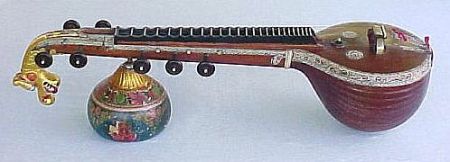
[Saṅgītaśiromaṇi
Saṅgītaśiromaṇi is a compilation or a Handbook of Indian Music prepared by a group of scholars, based on number of older texts in Sanskrit. It is said; Sultan Malika Sahi, who ruled the region surrounding Allahabad, invited a group of scholars to his capital Kada, during the year 1428; and, asked them to prepare a large book on music , to serve as the source / reference material, by making use of considerable number of ancient texts he had collected.
The resultant work Saṅgītaśiromaṇi, which to a large extent was based on Sarangadeva’s Sangitaratnakara, soon gained the reputation as a standard and a very valuable reference book on Music. And, various scholars and authors often quoted verses from Saṅgītaśiromaṇi. But, in the later times, sadly, the portions of the book dealing with musical instruments and dance were lost.
Please do read the edited and translated version of the first fourteen chapters of the Saṅgītaśiromaṇi, as rendered by the noted scholar Emmie Te Nijenhuis. Her edition of Saṅgītaśiromaṇi: A Medieval Handbook of Indian Music is remarkable for its scholarly and detailed explanation / illustration of the principles of Indian music such as : Sruti (intonation); Svara (notes); Grama ( tone-system); Murchana (scales); Taana (tone-patterns); Sadharana (overlapping); Varna (melodic line); Alamkara (musical figures or graces); Jati (mode); Giti (styles of singing); Ragas – their classifications and characterizations; and others.
The introduction, which Emmie Te Nijenhuis has scripted, is highly educative; and, students and scholars, alike, would certainly benefit, greatly, by reading it closely.]

























